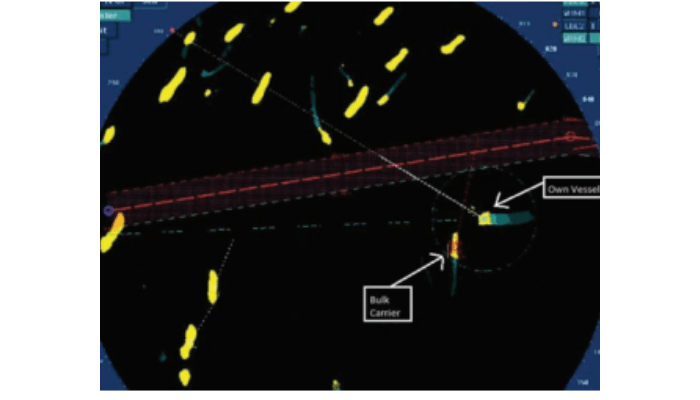Real Life Incident: Near Collision Between Two Vessels With Distance Of 35 Meters
July 28, 2022 Maritime Safety News
In darkness, a vessel was proceeding to a busy anchorage under the con of a pilot who had just boarded. The pilot and the Master engaged in small talk as they proceeded and there was also an OOW and a lookout on the bridge. Another vessel underway in the vicinity had recently altered course to port and, unknown to the bridge team or pilot, was now in a potential close quarters situation. Almost 10 minutes passed before the potential close quarters situation was observed by local VTS and the bridge team alerted to the danger by VHF radio.
Only now, with the other vessel just 0.3 nm away, was it plotted. There was initially some confusion as to the speed of the other vessel as the value was changing; but this was be expected in the first minute after plotting as the ARPA target acquisition algorithm needs to refine the calculations. Emergency course alterations were made and the bridge team tried to communicate with the other vessel by VHF radio. As the distance decreased between the two vessels, the bridge team, now under some stress, sounded a long blast on the fog horn. Finally, the other vessel passed astern only 35 metres away.

- A common mistake when pilot boards are for the bridge team to relax; the unstated assumption is that the pilot has everything under control. Not so! The bridge team must continue to do their jobs in full support of the pilot and vice versa.
- As part of a bridge team, never assume that someone else will see it. It is possible for any member of the bridge team to make an error or miss a cue. YOU may be the only one that identifies a potentially hazardous situation, and for this reason, every bridge team member should be alert.
- The danger signal is at least five short blasts.
Reference: The Nautical Institute





